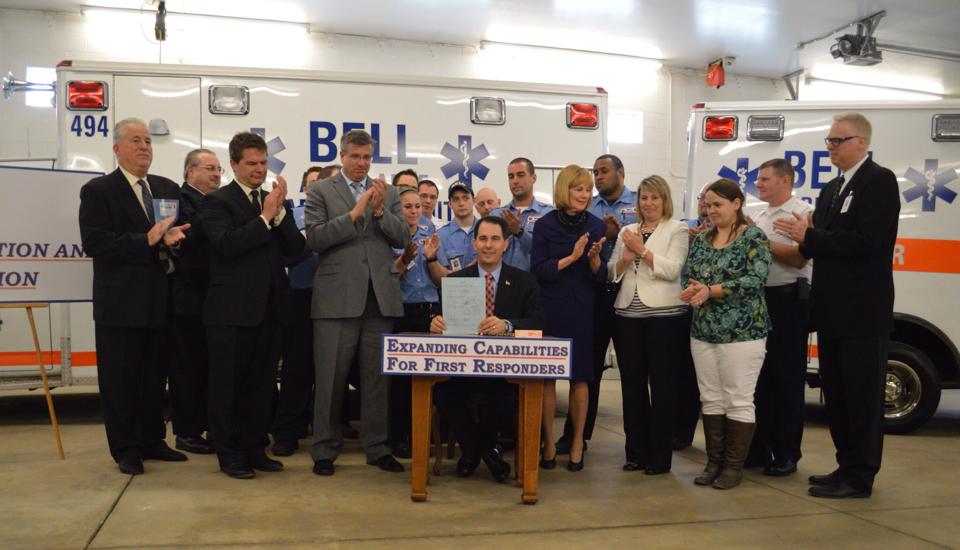Gov. Scott Walker signed seven bills Monday aimed at fighting the state's growing heroin problem during stops around the state.
The new laws include ones that will allow drug users to call 911 about overdoses without fear of prosecution, expand treatment alternatives and create quicker punishments for offenders who violate the terms of their probation.
Walker signed the bills at events in Marinette, Stevens Point, Eau Claire and Milwaukee. The Marinette County Courthouse was chosen as one venue because it is in the district ofstate Rep. John Nygren (R-Marinette), who has taken a lead in drafting the measures. Nygren's daughter Cassie has struggled with heroin addiction.
Bell Ambulance in Milwaukee also served as one of Gov. Walker's stops highlighting the new law (picture insert).
 "Wisconsin, like many states across the country, is experiencing a dangerous trend undefined an escalating number of cases of heroin use, addiction and overdose," Walker said in a statement. "Heroin addiction does not discriminate, and we have to take action to protect our friends, family members and neighbors who need help."
"Wisconsin, like many states across the country, is experiencing a dangerous trend undefined an escalating number of cases of heroin use, addiction and overdose," Walker said in a statement. "Heroin addiction does not discriminate, and we have to take action to protect our friends, family members and neighbors who need help."
Supporters have dubbed the bills Heroin Opiate Prevention and Education, or HOPE.
"I know that our HOPE agenda isn't the 'silver bullet' to overcoming our state's heroin epidemic," Nygren said in a statement. "Rather, these seven bills are an important first step in the right direction."
The new laws will:
■ Give people immunity from criminal prosecution for drug possession if they bring a fellow drug user to an emergency room or call911 because they believe the person is suffering from an overdose.
The measure does not provide immunity for drug dealing or other serious crimes.
■ Allow any first responders to administer naloxone if they are trained. Known by its brand name of Narcan, naloxone counteracts overdoses from heroin and other opiates. Currently, only certain emergency medical technicians are allowed to administer the drug, and the bill would make it more widely available.
■ Allow communities to create programs to dispose of prescription and illegal drugs to curb abuse of substances that can lead to heroin addiction.
■ Require people to show identification to pick up prescriptions that are considered to have a high potential for abuse.
■ Create two or three state programs to help treat heroin addicts in high-need, rural areas at an estimated cost of $2 million a year.
■ Add $1.5 million in funding annually for treatment alternatives and diversion programs that focus on substance abuse treatment for those who commit crimes.
■ Implement "swift and certain" punishments for those who violate the terms of their probation or parole. Advocates say making certain punishments happen quickly helps deter those on probation from reoffending.
Source: Milwaukee Journal-Sentinel

